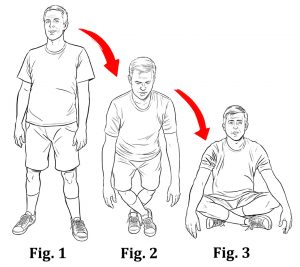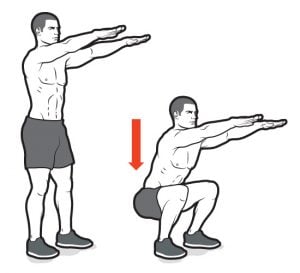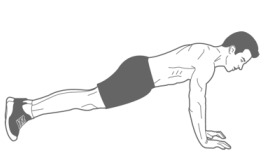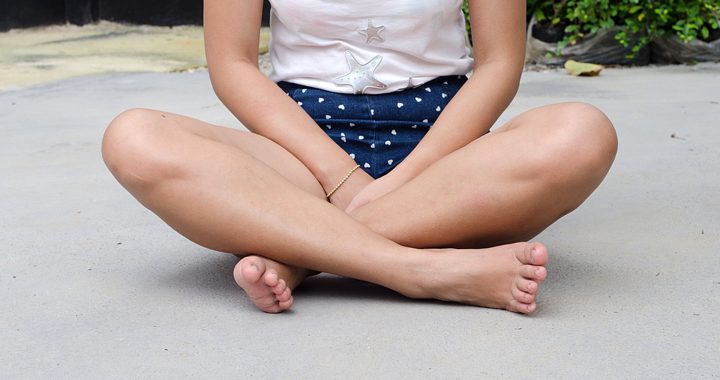I have a very simple test I’d like you to try out.
It won’t take much time – and it may seem a little unusual – but it’s really important.
And you’ll be SHOCKED by what it means for your health.
Here’s what I want you to do:
Sit down on the ground and then stand back up.
Sounds pretty easy, right?
There’s just one catch: You’ve got to do this without using your hands, arms, or knees for support.
Take as much time as you need. I suggest crossing your legs to lower slowly onto the ground, and to rise back to standing — you’ll have more control that way.
And every time you do need to use your hands, arms, or knees — make a note of it.
[Note: If you’ve got balance issues or are prone to falls, this isn’t for you… definitely skip this test!]
Here’s what it looks like…

I’m sure you’re wondering what, if anything, we can learn from such an unusual “test.”
Well, a 2012 study published in the European Journal of Preventive Cardiology found that these basic physical skills — sitting down and standing up — were huge predictors of longevity.
The study followed over 2,000 men and women ages 50 through 80… and the first thing scientists did was perform a Sitting Rising Test (SRT) — the same test you just tried.
Here’s how they scored the SRT:
Every participant started with a total of 10 points — 5 for sitting, 5 for rising.
Each participant lost a point for every hand, arm, or knee they needed for support.They also lost a half point every time they lost their balance, whether it was sitting down or standing back up.
A “10” is the best possible score — and a “0” is the WORST. (Scientists considered anything below a 7 to be cause for concern.)
Go ahead, try the test and keep score. You’ll want to know your SRT number…
Scientists found that of the 159 people who died during the 6-year study, ALL BUT 2 OF THEM struggled on the SRT test — meaning they scored 7 or below.
But they also found that every single point increase in SRT scores led to a 21% improvement in survival.
What does that mean for you?
Well, if you scored high on that SRT test, congratulations! You’re most likely in great shape.
And if your score was on the low side, don’t worry — it’s possible to improve your results with just a few exercises:
1) Sitting & Standing:
Just repeating the test (pictured above) over and over again will help strengthen the muscles you need to sit and stand without assistance.
Try to use less support every time until you’re able to do it completely unsupported. (Again, if you’re at risk of falling or getting stuck on the ground, make sure someone is around to help out.)
2) Simple Squats:
Doing just a few squats a day can really help strengthen your leg muscles… and you don’t have to hit the gym to do it.

Simply take a seat in an imaginary “chair” from a standing position, then ease your way back up, in 3 sets of 10, every day. (I actually do this when I’m watching TV.)
3) Practice Planking:
A plank is like the top of a pushup — and when done right, it’s an INCREDIBLE core workout.

Focus on keeping your arms and back straight and your abs pulled in for maximum results… and try to hold it for as long as possible. If you can only hold it for a few seconds, that’s okay – you’ll find yourself getting stronger every time!
These 3 simple exercises may not seem like much…but if you do them regularly, you’ll see a difference in your SRT score fast.
And you don’t have to spend hours working out, either, just five minutes a day: 2 minutes of squats, 1 minute of planks, 2 minutes sitting and standing.
And remember, every single point you can increase your SRT score could mean a huge boost to your longevity…
And that’s too important to ignore.
So please try the SRT test and leave a comment below to tell me how you did!
To great days ahead,
Dr. Bereliani

Source:
1 Brito LBB, Ricardo DR, Araujo DSMS, et al. Ability to sit and rise from the floor as a predictor of all cause mortality. Eur J Prevent Cardiol. 2012; 0(00) 1-7. doi: 10.1177/ 2047487312471759
